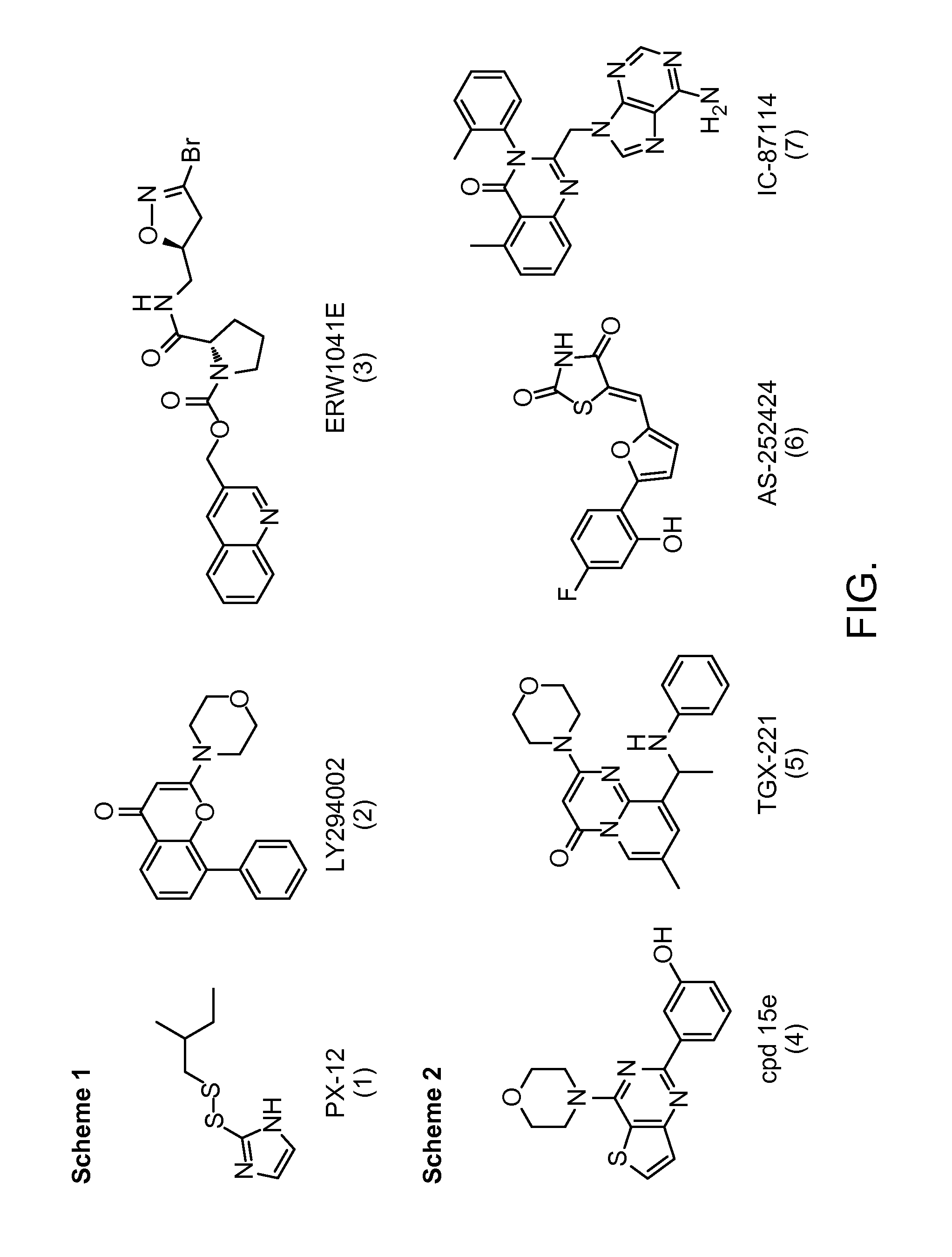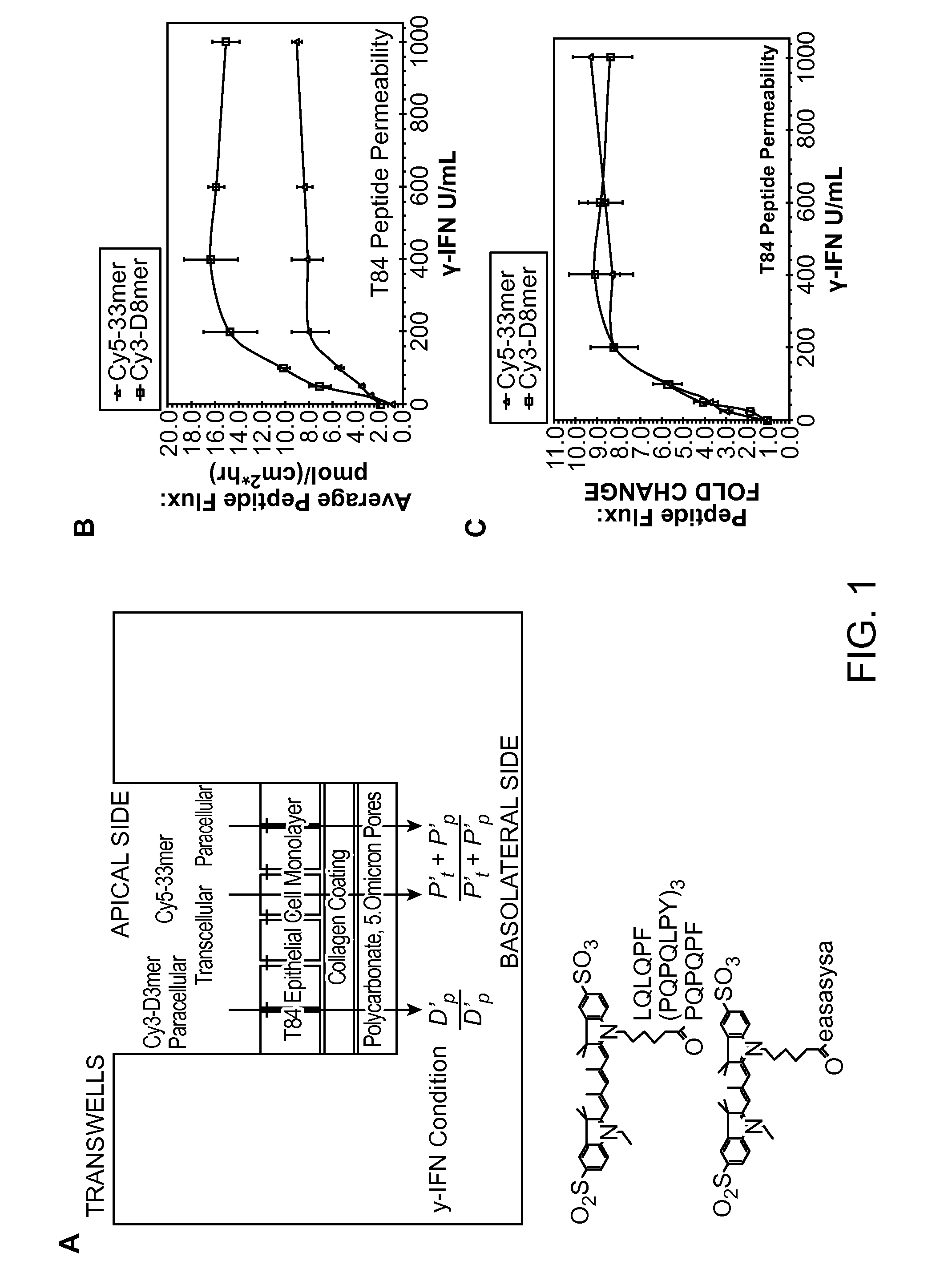Modulation of Tissue Transglutaminase Activation in Disease
a tissue transglutaminase and activation technology, applied in the field of disease activation modulation, can solve the problems of unsuitable tg2 biology evaluation in vivo and extremely difficult to maintain a gluten-free diet, and achieve the effect of high throughput in vitro cellular data
- Summary
- Abstract
- Description
- Claims
- Application Information
AI Technical Summary
Benefits of technology
Problems solved by technology
Method used
Image
Examples
example 1
[0154]Because IFN-γ is the primary pro-inflammatory cytokine secreted by these T cells, we hypothesized the existence of a signal transduction pathway for extracellular TG2 activation, one that is induced by IFN-γ. To test this hypothesis, we investigated the human intestinal epithelial cell line T84, because of a large body of evidence suggesting that these cells were responsive to IFN-γ. In particular, when the basolateral side of a cultured monolayer of T84 cells is exposed to IFN-γ, its permeability increases, as measured by the trans-epithelial flux of gluten peptides. Using this assay, we have verified the existence of a signal transduction pathway for extracellular TG2 activation, and have also identified PI3 kinase as a promising target for celiac sprue therapy.
[0155]IFN-γ Mediated Peptide Flux Across T84 Monolayers is Dominated by Paracellular Transport:
[0156]When the T84 model used in this study was exposed to IFN-γ, its trans-epithelial peptide flux increased (FIG. 1A). S...
PUM
| Property | Measurement | Unit |
|---|---|---|
| incubation time | aaaaa | aaaaa |
| incubation time | aaaaa | aaaaa |
| frequency | aaaaa | aaaaa |
Abstract
Description
Claims
Application Information
 Login to View More
Login to View More - R&D
- Intellectual Property
- Life Sciences
- Materials
- Tech Scout
- Unparalleled Data Quality
- Higher Quality Content
- 60% Fewer Hallucinations
Browse by: Latest US Patents, China's latest patents, Technical Efficacy Thesaurus, Application Domain, Technology Topic, Popular Technical Reports.
© 2025 PatSnap. All rights reserved.Legal|Privacy policy|Modern Slavery Act Transparency Statement|Sitemap|About US| Contact US: help@patsnap.com



